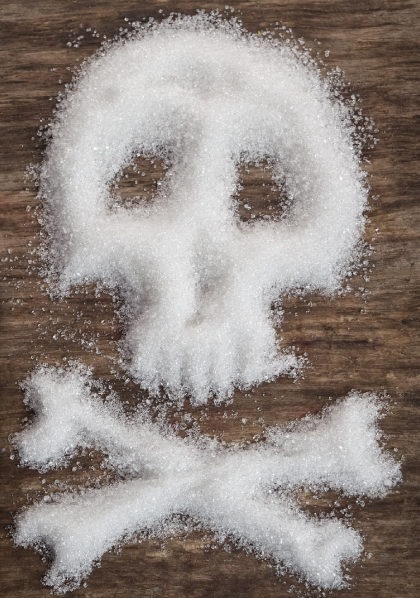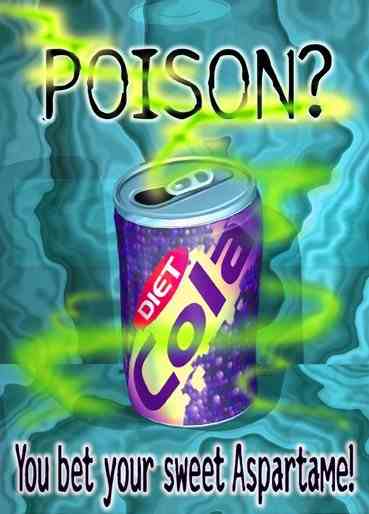Category: Bad Food
-
Harlow Article Search at NIH
Results are displayed in a computed author sort order. Results by year timeline is unavailable EXPERIMENTAL PHENYLKETONURIA IN INFANT MONKEYS.WAISMAN HA, HARLOW HF.Science. 1965 Feb 12;147(3659):685-95. doi: 10.1126/science.147.3659.685.PMID: 142420162CiteShare The development of infant monkeys fed low phenylalanine diets.Kerr GR, Chamove AS, Harlow HF, Waisman HA.Pediatr Res. 1969 Jul;3(4):305-12. doi: 10.1203/00006450-196907000-00006.PMID: 4979929 No abstract available.3CiteShare Phenylketonuria in infant monkeys.WAISMAN HA, WANG…
-

Waisman Article Search at NIH
Results are displayed in a computed author sort order. Results by year timeline is unavailable EXPERIMENTAL PHENYLKETONURIA IN INFANT MONKEYS. WAISMAN HA, HARLOW HF.Science. 1965 Feb 12;147(3659):685-95. doi: 10.1126/science.147.3659.685.PMID: 142420162CiteShare Phenylketonuria in rats: reversibility of behavorial deficit. Polidora VJ, Cunningham RF, Waisman HA.Science. 1966 Jan 14;151(3707):219-21. doi: 10.1126/science.151.3707.219.PMID: 177463403CiteShare Phenylalanine: Transplacental centrations in Rhesus Monkeys. Kerr GR, Waisman HA.Science.…
-

Dr. Harry Waisman, a respected expert in phenylalanine toxicity, conducted a study of the effects of aspartame on primates for GD Searle in 1970
G.D. Searle approached Dr. Harry Waisman, Biochemist, Professor of Pediatrics, Director of the University of Wisconsin’s Joseph P. Kennedy Jr. Memorial Laboratory of Mental Retardation Research and a respected expert in phenylalanine toxicity, to conduct a study of the effects of aspartame on primates. Seven infant monkeys were given aspartame with milk. One died after…
-

Long-Term Aspartame Administration Leads to Fibrosis, Inflammasome Activation, and Gluconeogenesis Impairment in the Liver of Mice
Simple Summary Aspartame is an artificial sweetener used in foods and beverages worldwide to prevent increasing obesity and diabetes mellitus, acting as a tool to help the control of caloric intake. However, its chronic intake is controversial since it has been linked to some adverse effects including oxidative stress, inflammation, and liver damage through mechanisms…
-

Jim Turner exposes horrific dangers and corrupt approvals of aspartame (and other products) Episode 22 – Podcast
https://livehealthybewell.com/podcast/jim-turner-exposes-horrific-dangers-and-corrupt-approvals-of-aspartame-and-other-products-episode-22/ Transcript Hi, this is Jeffrey Smith and welcome to my podcast, Live Healthy, Be Well. Today I’m playing you the audio version of a Facebook live I just did with Jim Turner. Jim was the first Nader Raider. He’s a bestselling author, he’s an attorney and he’s been a successful activist for decades. And…
-

What Is The CCC (Calorie Control Council)
The Calorie Control Council, established in 1966, is self-described as an international association representing the low- and reduced-calorie food and beverage industry. Other sites lead a reader to believe they are some kind of highfalutin kneecapping thugs. Calorie Control Council (CCC) – key facts – U.S. Right to Know
-

Landrigan PJ, Straif K. Aspartame and cancer – new evidence for causation. Environ Health. 2021;20(1):42. Published 2021 Apr 12. doi:10.1186/s12940-021-00725-y
https://www.ncbi.nlm.nih.gov/pmc/articles/PMC8042911/ Abstract Background Aspartame is one of the world’s most widely used artificial sweeteners and is an ingredient in more than 5000 food products globally. A particularly important use is in low-calorie beverages consumed by children and pregnant women. The Ramazzini Institute (RI) reported in 2006 and 2007 that aspartame causes dose-related increases in malignant…
-

Aspartame Notes
NOTES ASPARTAME Under various names, aspartame is an ingredient in tens of thousands of consumables. some researchers suggest it is “by far” the most dangerous food additive. this is a collection of notes and articles concerning aspartame (in no particular order). HISTORY Aspartame was discovered in 1965 by James M. Schlatter, a chemist working for…
-
The drug phencyclidine (PCP or ‘Angel Dust’) antagonizes glutamic acid non-competitively at the NMDA receptor
The drug phencyclidine (more commonly known as PCP or ‘Angel Dust’) antagonizes glutamic acid non-competitively at the NMDA receptor. For the same reasons, dextromethorphan and ketamine also have strong dissociative and hallucinogenic effects. Acute infusion of the drug LY354740 (also known as eglumegad, an agonist of the metabotropic glutamate receptors2 and 3) resulted in a marked diminution of yohimbine-induced stress response in bonnet macaques (Macaca radiata); chronic oral administration of LY354740 in those animals led to markedly reduced baseline cortisol levels…
-
Oxalyldiaminopropionic acid (ODAP) is a structural analogue of the neurotransmitter glutamate found in the grass pea Lathyrus sativus
Oxalyldiaminopropionic acid (ODAP) is a structural analogue of the neurotransmitter glutamate found in the grass pea Lathyrus sativus. It is the neurotoxin responsible for the motor neuron degeneration syndrome lathyrism. Woldeamanuel, Yohannes W.; Hassan, Anhar; Zenebe, Guta (2011-11-12). “Neurolathyrism: two Ethiopian case reports and review of the literature”. Journal of Neurology. 259 (7): 1263–1268. doi:10.1007/s00415-011-6306-4. ISSN 0340-5354. PMID 22081101. S2CID 27543906. Sources ODAP is found in the seeds of the legume L. sativus, a grass pea…
-

The sweet pea is a flowering plant in the genus Lathyrus in the family Fabaceae (legumes) 🧪☣️☠️⚗️🤢
The sweet pea, Lathyrus odoratus, is a flowering plant in the genus Lathyrus in the family Fabaceae (legumes), native to Sicily, southern Italy and the Aegean Islands. It is an annual climbing plant, growing to a height of 1–2 metres (3 ft 3 in – 6 ft 7 in), where suitable support is available. The leaves are pinnate with two leaflets and a terminal tendril, which twines around supporting plants and structures, helping the sweet pea to climb. In…
-
Filbertone
Filbertone is the principal flavor compound of hazelnuts. It is used in perfumery and is designated as generally recognized as safe (GRAS) for use in foods. Because filbertone is found in hazelnut oil, its presence can be used to detect the adulteration of olive oil with less expensive hazelnut oil. The natural compound is mixture of both enantiomers, and the composition can vary depending…
Recent Posts
- 🧬 Disease Table with Low Sodium Connection
- 🧂 Sodium Reduction and Sodium Replacement: A History of Reformulation and Exploding Diseases, Including Many Diseases Unheard of Before Deadly Sodium Policies
- 🧂 The DEADLY 1500 mg Sodium Recommendation predates the WHO’s formal global sodium reduction push by nearly a decade (and it’s even worse than that)
- 🧬 What Is Beta-Glucuronidase?
- When Sugar Was Salt: Crystalline Confusion and the Covenant of Sweetness
Tags
ADAM ASPARTAME Birds Blood Bones Brain Bugs Cancer Columba Cows crystallography Death Death cults Eggs Etymology Gastrin Gold Growth hormone History Hormones Insulin Liver Mere Perplexity Metal Monkey Business Mythology Paracetamol Plants Poison Pregnancy Protein Religion Reproduction Rocks Salt Slavery Snakes Sodium the birds and the bees Thiocyanate Tobacco Tylenol Underworld Venom zinc
